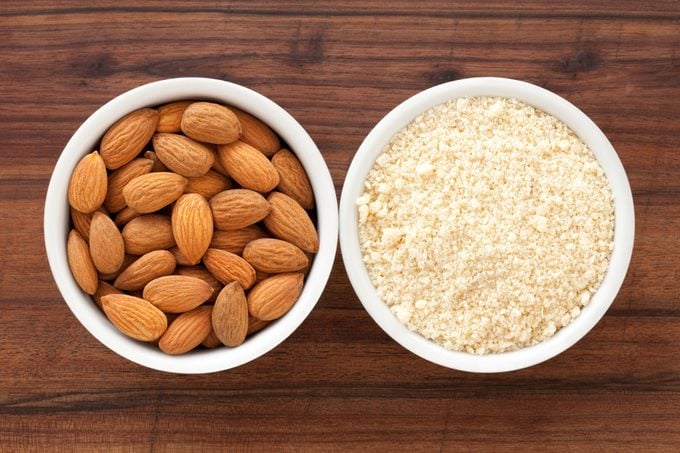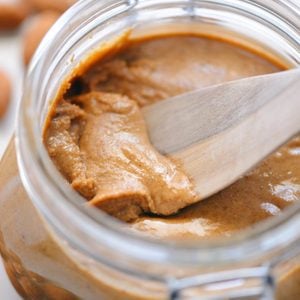How to Make Almond Flour
Updated: Mar. 30, 2022
Skip the pricy pre-made stuff and opt to make your own almond flour. Registered dietitian Vanessa Rissetto shares her foolproof recipe.
Our editors and experts handpick every product we feature. We may earn a commission from your purchases.
Grain-free flour alternatives
Basic white flour, which is also known as all-purpose flour and is derived from wheat, has more competition than ever at the grocery store.
Alternative flours are gaining popularity, including almond flour. It’s loved by nutritionists and bakers alike because it’s lower in carbs, gluten-free, and easy to use in recipes that call for traditional all-purpose flour. It’s also grain free, which is great for those who can’t tolerate wheat or gluten.
Another bonus? It’s pretty simple to make. Here’s a closer look at how to make almond flour and use it in your favorite dessert recipes.
What is almond flour?
Traditionally, almond flour is made by blanching almonds in boiling water to remove the skins, then grinding and sifting them into a fine flour. Virtually all almond flour recipes have several things in common: They require a food processor (or blender) and almonds—that’s it. You’ll place the almonds in the processor and pulse 50 to 60 times in one-second increments, making sure to scrape the sides so you don’t end up with almond butter.
Almond meal is similar; however, it is made with raw, unpeeled almonds. If you’re making a dessert like cake, almond flour is better since it’s lighter in texture and has a more neutral flavor.
And almond flour is lower in carbohydrates and higher in fat than all-purpose flour. This makes it attractive for baking. You can, for all intents and purposes, make the same desserts you love without sacrificing texture or flavor.
Some almond flour nutritional information per 1/4 cup:
-
Calories: 170
-
Fat: 15 grams
-
Protein: 6 grams
-
Carbs: 6 grams
-
Dietary fiber: 3 grams
Almond flour health benefits
Why almond flour over any other flour? As I mentioned before, it’s gluten-free, which is obviously helpful for anyone who has celiac disease or is trying to avoid gluten.
Blood sugar control is another benefit, especially for people with diabetes. Ounce for ounce, almond flour is lower in carbs and higher in fiber than regular white flour, which helps slow digestion and keep blood sugar levels stable, according to studies published in 2017 and 2018 issues of the journal Nutrients.
Almond flour has a fair amount of soluble fiber (three grams per 1/4 cup). It’s this kind of fiber that is believed to help lower total blood cholesterol levels by lowering low-density lipoprotein (LDL), or “bad,” cholesterol levels, according to a study published in 2016 in Nutrients. Fiber also helps control blood glucose levels and maintain healthy bowel function.
(Here are other reasons why almonds are one of the healthiest nuts you can eat.)

How to make almond flour
Making almond flour at home is easier than you might think. To make almond flour, toss almonds into a blender (slivered or chopped almonds work best), and blend away until they are finely ground flour. Again, make sure you don’t over-blend, or you’ll make almond butter.
Basic Almond Flour
Makes about 1 1/2 cups fine almond flour
Ingredients:
1 1/2 cups slivered almonds
Instructions:
Blend almonds in a high-speed blender (we love Vitamix or Ninja blenders—they can blend the almonds super fine) for about 10 to 15 seconds. Stop blending, and use a spoon to scrape down the edges. Blend once more for 10 to 15 seconds. Store in an airtight glass container for up to eight weeks in a cool, dark place.
Use this recipe for almond flour to make one of these delicious dishes that use almond flour.



